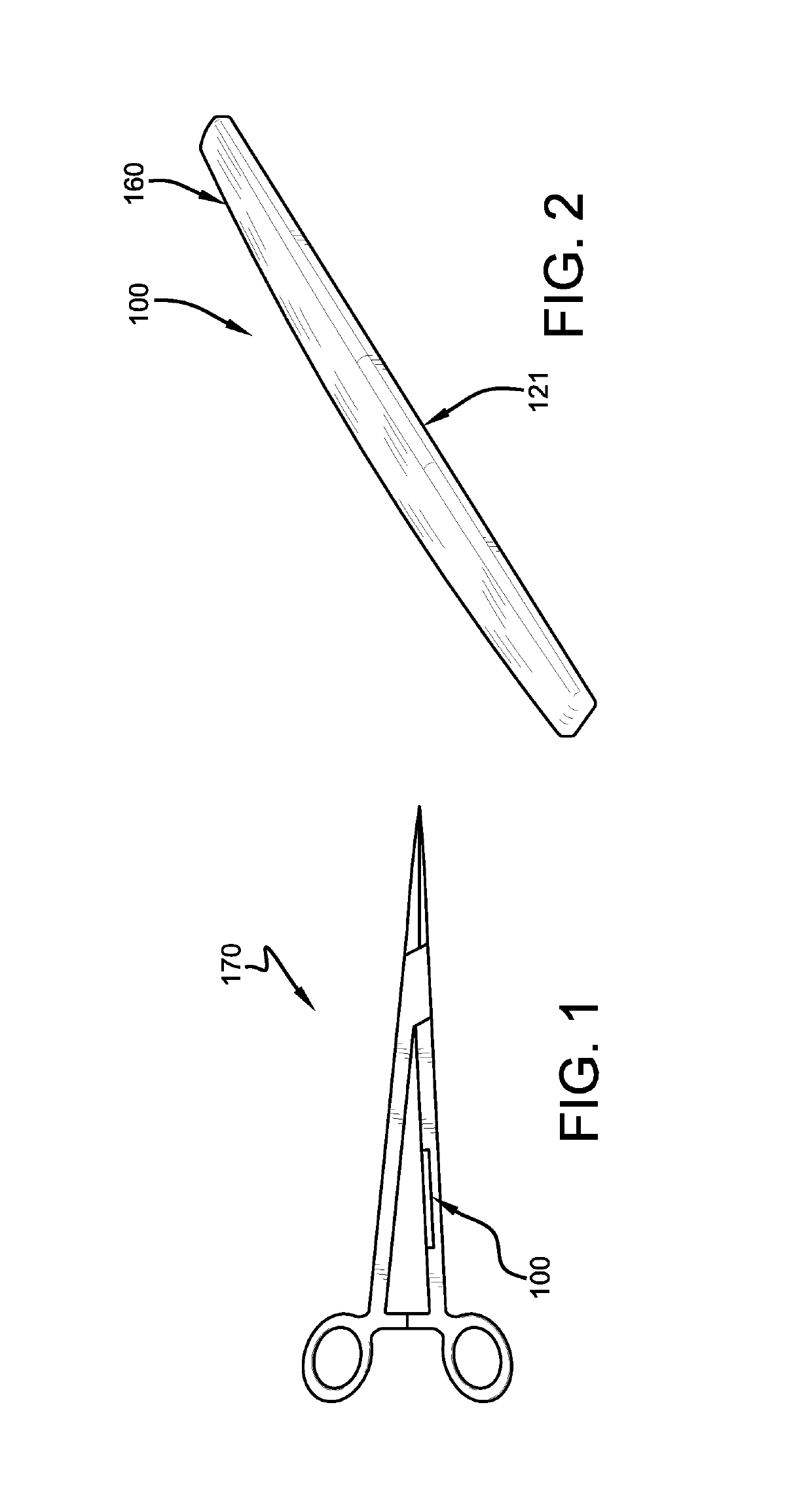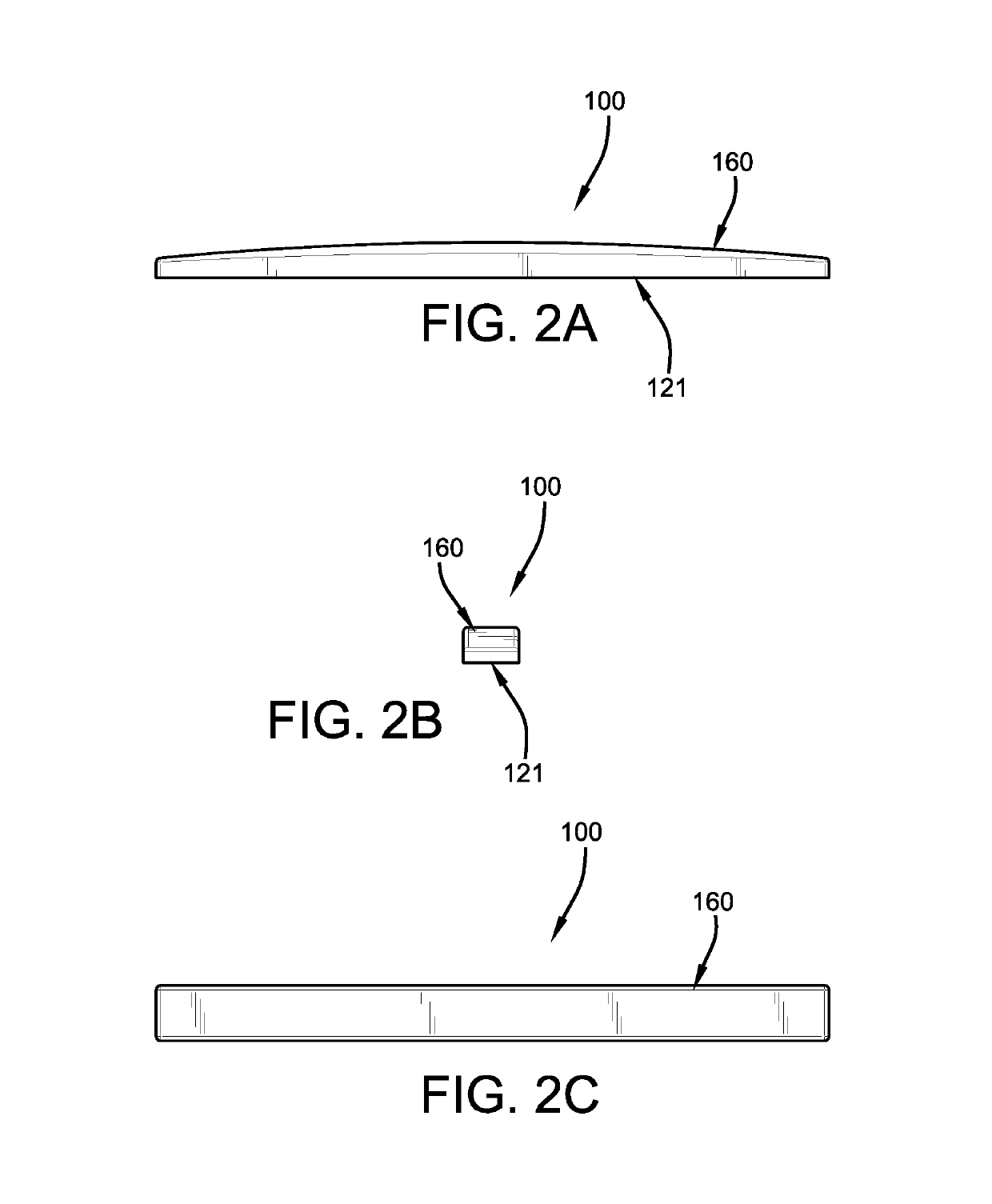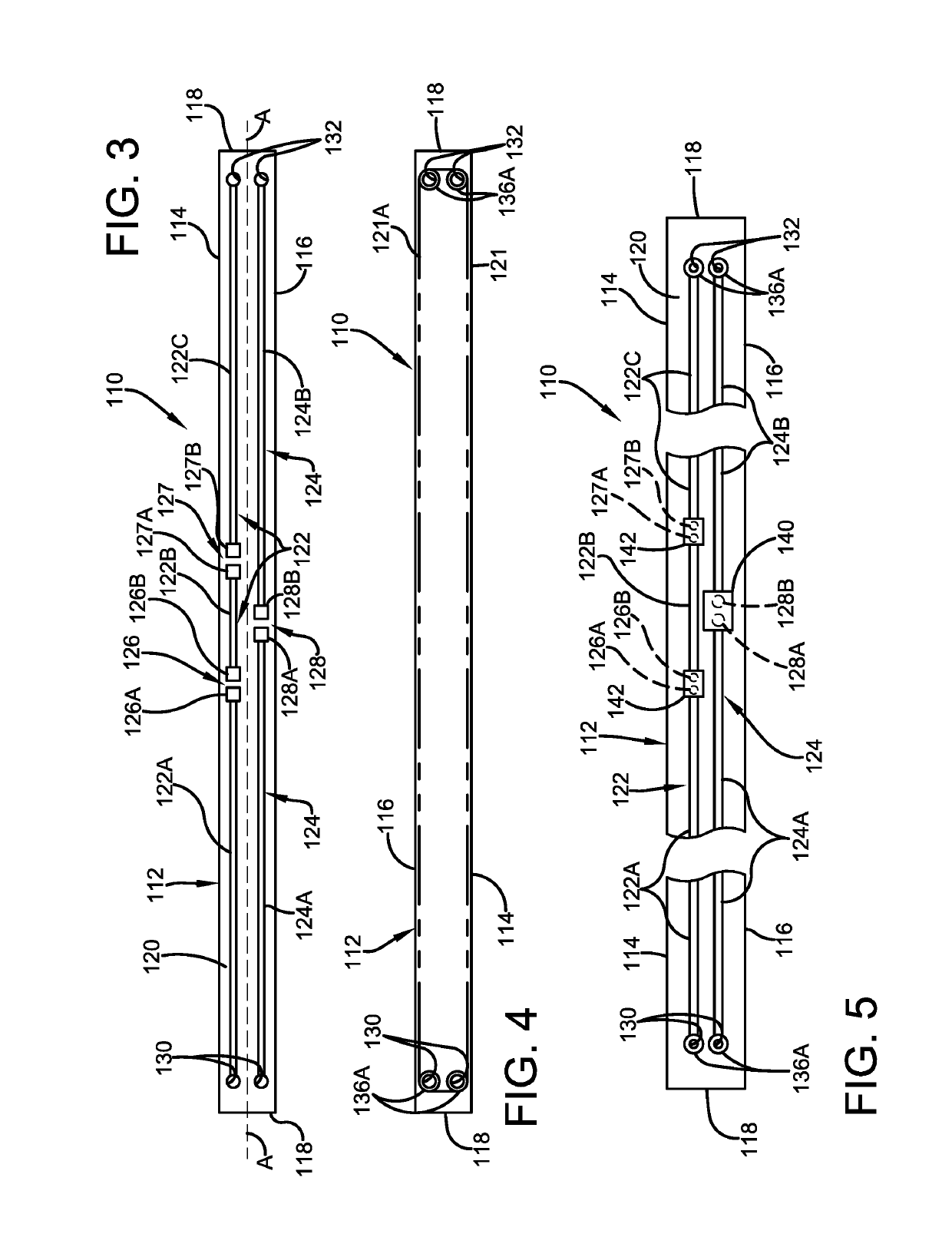Micro RFID tag with conductive interface
a micro-rfid and interface technology, applied in the field of equipment identification and equipment tracking systems, can solve the problems of inability to meet the intended function of the rfid tag, lack of specificity of visual markings, and increased time for workers to accomplish, and achieve the effect of increasing the read range of the micro-rfid tag
- Summary
- Abstract
- Description
- Claims
- Application Information
AI Technical Summary
Benefits of technology
Problems solved by technology
Method used
Image
Examples
Embodiment Construction
[0034]An article 170, such as a surgical instrument, is illustrated in FIG. 1 with a first exemplary embodiment micro RFID tag 100, according to the subject disclosure, mounted thereon. First exemplary embodiment micro RFID tag 100 includes a substrate assembly 110 (FIGS. 3-5) and an encapsulation layer 160 (FIG. 8) partially or wholly surrounding the substrate assembly. Substrate assembly 110 has a non-conductive support substrate 112 formed from any suitable material, such as fiberglass or other glass epoxy, as is known. Substrate 112 is a single-layer construction and may have a flat printed circuit board (“PCB”) configuration with a longitudinal central axis A. Alternatively, substrate 112 may have a multi-layer construction formed from a suitable process, such that substrate 112 may have multiple integrated circuits and interconnections spanning multiple layers. Substrate 112 generally includes an upper surface 120; elongated, parallel, spaced-apart opposing side edges 114, 116...
PUM
 Login to View More
Login to View More Abstract
Description
Claims
Application Information
 Login to View More
Login to View More - R&D
- Intellectual Property
- Life Sciences
- Materials
- Tech Scout
- Unparalleled Data Quality
- Higher Quality Content
- 60% Fewer Hallucinations
Browse by: Latest US Patents, China's latest patents, Technical Efficacy Thesaurus, Application Domain, Technology Topic, Popular Technical Reports.
© 2025 PatSnap. All rights reserved.Legal|Privacy policy|Modern Slavery Act Transparency Statement|Sitemap|About US| Contact US: help@patsnap.com



